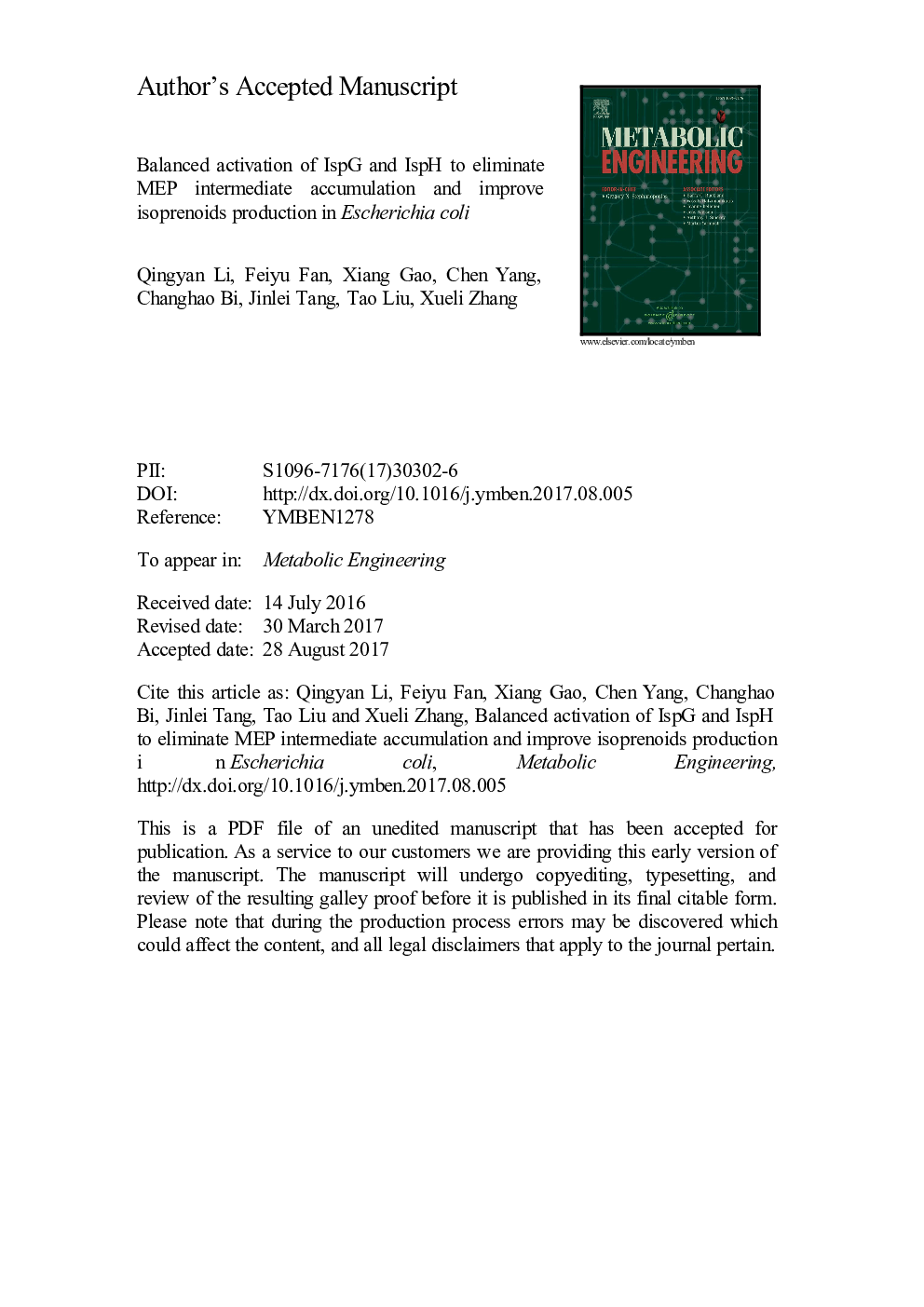| Article ID | Journal | Published Year | Pages | File Type |
|---|---|---|---|---|
| 6494146 | Metabolic Engineering | 2017 | 41 Pages |
Abstract
The MEP pathway genes were modulated to investigate whether there were new rate-limiting steps and toxic intermediates in this pathway. Activating IspG led to significant decrease of cell growth and β-carotene production. It was found that ispG overexpression led to accumulation of intermediate HMBPP, which seriously interfered with synthesis machinery of nucleotide and protein in Escherichia coli. Activation of the downstream enzyme IspH could solve HMBPP accumulation problem and eliminate the negative effects of ispG overexpression. In addition, intermediate MECPP accumulated in the starting strain, while balanced activation of IspG and IspH could push the carbon flux away from MECPP and led to 73% and 77% increase of β-carotene and lycopene titer respectively. Our work for the first time identified HMBPP to be a cytotoxic intermediate in MEP pathway and demonstrated that balanced activation of IspG and IspH could eliminate accumulation of HMBPP and MECPP and improve isoprenoids production.
Keywords
Related Topics
Physical Sciences and Engineering
Chemical Engineering
Bioengineering
Authors
Qingyan Li, Feiyu Fan, Xiang Gao, Chen Yang, Changhao Bi, Jinlei Tang, Tao Liu, Xueli Zhang,
